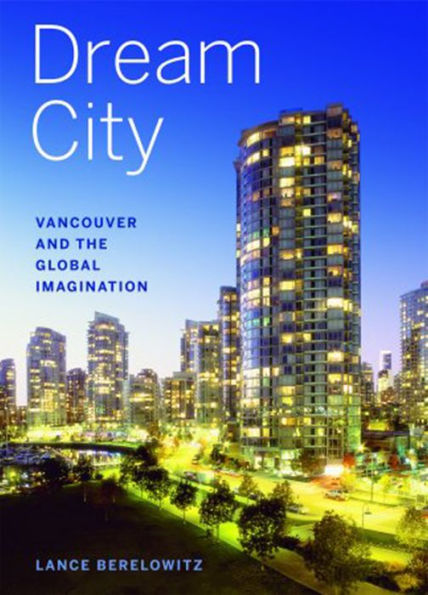

eBook
Related collections and offers
Overview

Product Details
| ISBN-13: | 9781926685632 |
|---|---|
| Publisher: | Douglas and McIntyre (2013) Ltd. |
| Publication date: | 07/01/2009 |
| Sold by: | Barnes & Noble |
| Format: | eBook |
| Pages: | 240 |
| File size: | 21 MB |
| Note: | This product may take a few minutes to download. |
About the Author
In a recently completed term as Chair of the Vancouver City Planning Commission, Berelowitz contributed to advising City Council on a broad range of planning issues.
Lance Berelowitz was Editor-in-Chief of Vancouver’s successful 2010 Olympic Winter Games Bid Book submission to the IOC.
Read an Excerpt
Introduction
Vancouver has emerged as the poster child of urbanism in North America. In recent years, through a series of locally grown strategies, Vancouver has consciously willed itself into becoming a model of contemporary city-making. Like the most vivid of dreams, the city is reinventing itself: something curious, perhaps even miraculous, is happening here. The visitors—mostly from American cities seeking to find the key to their own urban renewal—come in steady droves, eagerly shepherded around town by local planners, politicians and academics. They go away suitably impressed. Barely a month goes by without yet another magazine article or news report praising Vancouver’s urban virtues.
And it is easy to be impressed by the obvious: the city’s spectacular setting, the intimate and apparently happy cohabitation of wild nature and built fabric, the tightly packed gleaming new condo towers downtown, the public waterfront, the vibrant neighbourhood high streets, the neat parks and lush, tree-lined suburban streets. The place seems to work.
But how did Vancouver get here, and is the attention deserved? How much of Vancouver’s experience is applicable to other cities, particularly those in the United States? Why are places such as Shanghai, San Francisco and even Toronto now hiring Vancouver architects and planners to fix their cities? In short, what are the keys to understanding Vancouver’s unique sense of place and its relevance to the rest of the world?
To answer these questions is to look into the heart of this city of dreams, to dig beneath the surface impressions and unravel fact from myth, cause from consequence. In short, this is writing as a form of urban archaeology. Or perhaps, to offer a more suggestively West Coast genre, it is a detective story.
Vancouver has propagated a number of myths about itself, now well established and accepted in the public mind. Yet it is a city of paradoxes. Dig deeper beyond the obvious, and the reasons for Vancouver’s success seem more often to do with historical happenstance or a kind of invented authenticity. Or simply having made fewer mistakes as a result of being so remote and so much later in its development than almost any other major North American city. Ironically, Vancouver’s very isolation and relative lack of political and economic power have meant that it was largely bypassed by the worst of North American “urban renewal”: freeways, elevated and underground pedestrian systems, huge shopping malls, big-box retail, oversized curvilinear dead-end streets in place of the traditional street grid.
Certainly, metropolitan Vancouver does have many of these symptoms of “modern” North American town planning, particularly in its outlying suburbs and bedroom communities where in fact the majority of its residents live. But there is a kind of virtuous cordon sanitaire around the City of Vancouver itself: almost no freeways transgress its municipal boundaries or violate the regular street grid, and a grand total of just two suburban shopping malls besmirch its neighbourhoods.
There is a certain irony in American cities looking to Canada to remember what the United States taught us about city building and have now forgotten themselves. Think of Daniel Burnham, the Olmstead brothers, Harland Bartholomew, even Robert Moses, all of whom had an effect on the layout and form of many Canadian cities. In Vancouver’s case, both Shaughnessy Heights and the British Properties were developed under the influence of these giants of American town planning. And Vancouver’s vaunted, now late lamented, urban and interurban streetcar system was directly modelled on similar ones in Los Angeles and other American cities.
And—just as Los Angeles is for restless Americans—Vancouver has always been whatever newcomers want it to be, the perennial immigrants’ city of the imagination: Dream City. Yet it is really the place itself that has seduced the imagination of émigrés and visitors alike.
Of course, back in 1985 when I first arrived in Vancouver, I knew none of this. But I had my suspicions...
Table of Contents
AcknowledgementsIntroduction
1 The Elemental City
2 In the Garden of Eden
3 In Nature’s Way
4 The Physical Armature
5 Brushes with Destiny: Vancouver’s Experience with Master-planning
6 The Transportation Palimpsest
7 The Road Not Taken
8 For Sale: The (Abridged) Story of Vancouver’s Development Community
9 A Sense of Place: Characteristics of Vancouver’s Public Realm
10 Urbanists at Large in the Garden City: The Search for an Urban Tradition
11 Edge City
12 The Domestic Tradition: The Search for an Indigenous Architecture
13 A Brief History of Zoning
14 Hollywood North
15 Public Life or Spectacle?
Epilogue: Dream City
Notes
Bibliography
Index
